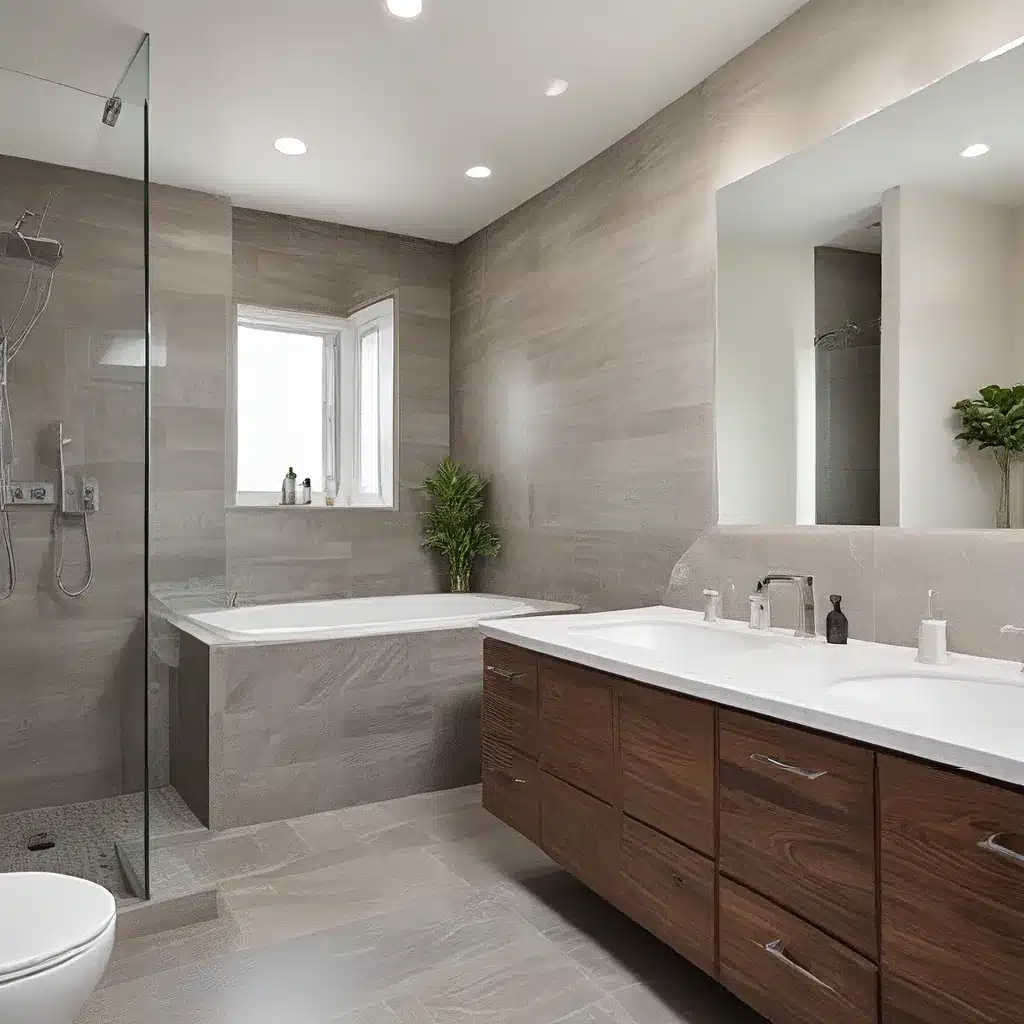
As homeowners and interior designers alike seek to create more environmentally-conscious living spaces, the bathroom has emerged as a prime area for eco-friendly renovations. From water-efficient fixtures to sustainable material choices, there are a wealth of opportunities to reduce your bathroom’s ecological footprint without sacrificing style or functionality.
Selecting Water-Wise Washbasins and Faucets
When it comes to bathroom renovations, water conservation is often the primary focus for eco-minded homeowners. Outdated toilets, showerheads, and faucets can waste hundreds of gallons of water per day, significantly driving up utility bills and straining local water resources. Fortunately, the latest generation of WaterSense-certified bathroom fixtures offer significant water savings without compromising performance.
For washbasins and sinks, look for models with the WaterSense label, which indicates they use no more than 1.5 gallons per minute (GPM) – a 30% reduction from the standard 2.2 GPM flow rate. These high-efficiency faucets often incorporate aerators that mix air with the water stream, maintaining acceptable pressure while drastically reducing consumption. Alternatively, you can install low-flow sink aerators that restrict the flow to just 0.5 GPM, cutting water use by over 75% compared to a standard faucet.
Beyond faucets, dual-flush toilets are another water-saving bathroom essential. These innovative fixtures allow users to select between a full 1.6-gallon flush for solid waste or a reduced 0.8-gallon flush for liquid waste, potentially saving thousands of gallons per year. Some advanced models even integrate a sink into the tank, reusing the water from hand-washing for the next flush – a true water-recycling marvel.
Harnessing the Power of Greywater
While optimizing water fixtures is a great start, truly eco-friendly bathroom renovations should also consider greywater systems. Greywater refers to the relatively clean wastewater generated from sinks, showers, and washing machines, which can be diverted and reused for landscape irrigation or toilet flushing.
Greywater systems collect this water, filter out solids and contaminants, and then distribute it through a dedicated plumbing network. Not only does this reduce overall water consumption, but it also diminishes the burden on municipal sewage treatment facilities. Depending on local regulations, a well-designed greywater system can save the average household tens of thousands of gallons of potable water annually.
For homeowners undertaking a bathroom renovation, integrating a greywater system can be an impactful investment. While the upfront costs may be higher, the long-term water savings and environmental benefits often make it a worthwhile project, especially in regions facing chronic drought or water scarcity concerns.
Embracing Sustainable Materials
Beyond water efficiency, eco-friendly bathroom renovations should also prioritize the use of sustainable materials. Traditional bathroom cabinetry, countertops, and flooring often contain volatile organic compounds (VOCs), formaldehyde, and other potentially harmful chemicals that can off-gas into the indoor air.
When selecting washbasin vanities, cabinets, and other fixtures, opt for materials like solid wood, bamboo, recycled steel, or concrete that are free of these concerning compounds. Formaldehyde-free composite woods and FSC-certified lumber are also excellent environmentally-friendly choices. For countertops, consider recycled glass, paper, or concrete options that reduce waste while offering a sleek, modern aesthetic.
For bathroom flooring and wall coverings, tile is a classic and durable option. Look for tiles made from recycled content, reclaimed wood, or Ivory Palm, a sustainable material derived from the Tagua nut. PVC-free, heavy metal-free, and VOC-free wallpaper or natural plasters can also contribute to a healthier indoor environment.
Optimizing Energy Efficiency
While water conservation is a primary concern, eco-friendly bathroom renovations should also address energy efficiency. Older lighting fixtures, exhaust fans, and water heaters can significantly increase a home’s overall energy use and carbon footprint.
ENERGY STAR-certified LED lighting not only uses up to 90% less energy than traditional incandescent bulbs but also lasts 25 times longer. Installing motion-sensing or humidity-activated exhaust fans can further reduce energy consumption by ensuring the fans only run when needed.
For the water heater, upgrading to a more efficient tankless or heat pump model can yield substantial savings. These advanced systems heat water on-demand, eliminating the energy waste associated with continuously maintaining a tank of hot water.
Sustainable Renovation Practices
Beyond the products and materials used, the actual renovation process can also be made more eco-friendly. Whenever possible, donate or recycle existing bathroom fixtures and materials that are in decent condition, rather than sending them to the landfill.
Engage with green building professionals who have experience in sustainable renovations. These contractors can advise on the most environmentally-responsible construction methods and help you navigate the often-complex world of eco-friendly building codes and regulations.
During the renovation, prioritize the use of low-VOC paints, sealants, and adhesives to minimize indoor air pollution. Additionally, consider daylighting strategies like skylights or solar tubes to reduce the need for artificial lighting and harness the power of natural illumination.
Elevating Your Bathroom’s Eco-Friendly Appeal
By thoughtfully incorporating water-efficient fixtures, sustainable materials, and energy-saving technologies, you can transform your bathroom into a green oasis that not only reduces your environmental impact but also enhances the overall comfort and aesthetics of your home.
Combining these eco-friendly upgrades with smart renovation practices can yield significant long-term benefits, from lower utility bills to a healthier indoor environment. As you embark on your bathroom renovation journey, keep these principles of sustainability in mind to create a space that is both visually stunning and environmentally responsible.
Remember, your bathroom renovation is an opportunity to make a meaningful contribution to a more sustainable future. By choosing the right products and embracing eco-friendly design, you can elevate your home’s environmental profile while enjoying the luxurious comfort of a modern, water-wise washbasin and fixture setup.
For more inspiration and guidance on your eco-friendly bathroom renovation, be sure to explore the comprehensive resources available at WashbasinFactory.com. Our team of experts is dedicated to helping homeowners and professionals alike create beautiful, sustainable bathroom spaces that are built to last.

